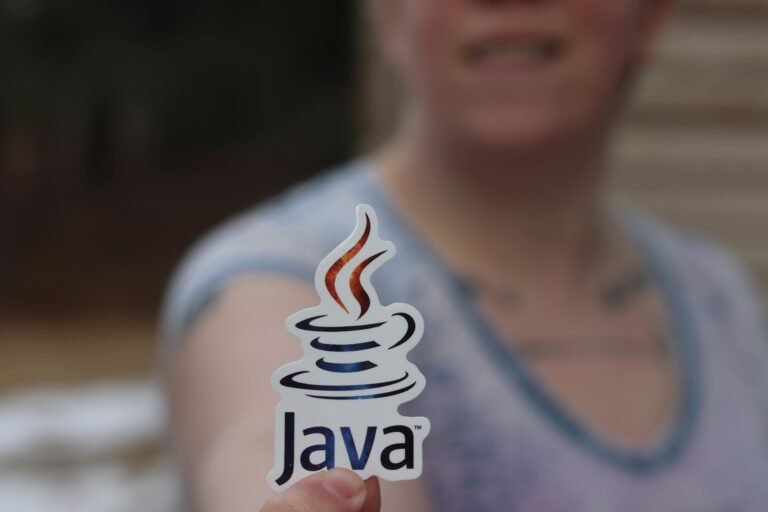Setting Up Java JDK: Installing and Configuring Java
Setting up Java on your computer is the first step toward becoming a Java developer. Whether you’re using Windows, Linux, or macOS, installing the Java Development Kit (JDK) correctly is essential for running and developing Java applications. In this guide, we’ll walk you through installing Java JDK and setting up your Java development environment step by step.
What is Java JDK?
The Java Development Kit (JDK) is a software package that includes everything needed to develop, compile, and run Java programs. It contains:
- The Java Compiler (javac) to compile Java code
- The Java Virtual Machine (JVM) to execute Java applications
- The Java Runtime Environment (JRE) with essential libraries
- Various development tools like debuggers and monitoring utilities
Step-by-Step Guide to Installing Java JDK
1. Check if Java is Already Installed
Before installing Java, check if you already have it on your system:
Windows:
java -versionLinux/macOS:
java -versionIf Java is installed, you’ll see the version. If not, proceed with the installation steps below.
2. Download the Java JDK
Visit the official Oracle website to download the latest Java SE Development Kit (JDK):
You can also install OpenJDK, an open-source alternative: 🔗 Download OpenJDK
3. Install Java JDK on Windows
- Run the Installer – Double-click the downloaded .exe file.
- Follow the Setup Wizard – Click Next and follow the on-screen instructions.
- Set the Installation Path – The default location is C:\Program Files\Java\jdk-XX.
- Complete Installation – Click Finish once the installation is done.
4. Install Java JDK on macOS
- Open the .dmg file – Double-click the downloaded file.
- Run the Installer – Follow the on-screen instructions.
- Verify Installation – Open the terminal and type:
java -version5. Install Java JDK on Linux (Ubuntu/Debian)
For Oracle JDK:
sudo apt update
sudo apt install openjdk-XX-jdkFor OpenJDK:
sudo apt install openjdk-XX-jdkVerify installation:
java -versionSetting Up Java Environment Variables
After installation, you may need to configure environment variables for Java.
Windows
- Open System Properties – Search for Environment Variables in Windows.
Set JAVA_HOME – Click New under System Variables and add:
Variable name: JAVA_HOME
Variable value: C:\Program Files\Java\jdk-XX - Update PATH – Find Path in System Variables, click Edit, and add:
%JAVA_HOME%\bin - Apply Changes – Click OK and restart your computer.
Linux/macOS
Open the terminal and edit the profile file (~/.bashrc or ~/.zshrc):
echo 'export JAVA_HOME=/usr/lib/jvm/java-XX-openjdk' >> ~/.bashrc
echo 'export PATH=$JAVA_HOME/bin:$PATH' >> ~/.bashrc
source ~/.bashrcVerify:
echo $JAVA_HOME
java -versionTesting Java Installation
To confirm everything is set up correctly, create a simple Java program:
- Open a text editor and save the following as HelloWorld.java:
public class HelloWorld {
public static void main(String[] args) {
System.out.println("Hello, Java World!");
}- Compile the Java program:
javac HelloWorld.java- Run the compiled program
java HelloWorldIf you see Hello, Java World!, Java is correctly installed!
Frequently Asked Questions (FAQ)
1. What is the difference between JDK and JRE?
- JDK (Java Development Kit) includes tools to develop Java applications.
- JRE (Java Runtime Environment) contains libraries and JVM to run Java applications but does not include development tools.
2. Do I need to install JDK to run Java applications?
No. If you only need to run Java programs, installing the JRE is enough. However, for development, you need the JDK.
3. How do I uninstall Java JDK?
Windows: Go to Control Panel > Programs > Uninstall a program, select Java, and click Uninstall.
macOS: Run the following command:
sudo rm -rf /Library/Java/JavaVirtualMachines/jdk-XX.jdkLinux: Use:
sudo apt remove openjdk-XX-jdk4. Can I have multiple JDK versions installed?
Yes! You can manage multiple Java versions using tools like jEnv (macOS/Linux) or manually updating the JAVA_HOME variable.
5. How do I update Java to the latest version?
Visit Oracle’s Java download page and install the latest JDK. Linux users can update via package managers (apt, yum, dnf).
Conclusion
Congratulations! You’ve successfully installed Java JDK and configured your development environment. Now, you’re ready to start coding in Java!
🚀 Now that Java is installed, how about learning your first code structure? Check out our next post!



